Discover the ultimate guide to natural remedies for plantar fasciitis. From lifestyle adjustments to home treatments, start your journey to foot pain relief and improved mobility today with Fresh Home Keepers.
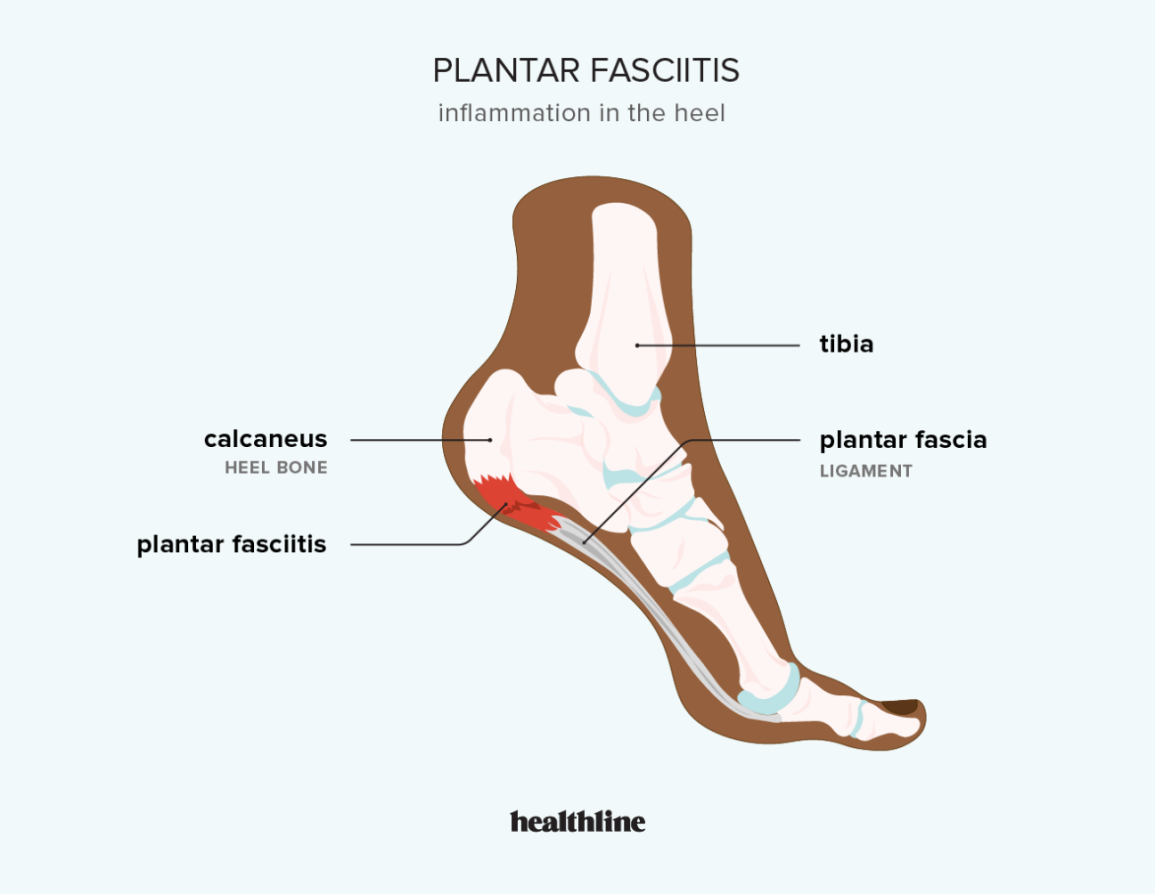
Introduction
Welcome to our in-depth guide on combating plantar fasciitis with natural remedies. Plantar fasciitis, a common yet painful condition, affects the band of tissue stretching across your foot. If you’re seeking effective, non-invasive solutions for lasting relief and enhanced mobility, you’ve come to the right place. Dive into our expert insights and start your path to recovery now.
Table of Contents
What is Plantar Fasciitis?
Plantar fasciitis is characterized by inflammation of the plantar fascia, the robust tissue band stretching across your foot’s bottom, linking the heel bone to the toes. This tissue functions as a shock-absorbing bowstring that upholds your foot’s arch. Excessive tension and stress can lead to minor tears in the fascia, with ongoing stretching and tearing causing irritation or inflammation.
Root Causes of Plantar Fasciitis

Identifying the root causes of plantar fasciitis is essential for both prevention and effective treatment. The condition can affect anyone, regardless of age or fitness level, but certain factors may heighten the risk:
| Excessive Load on the Foot |
| Engaging in activities that exert considerable stress on your heel and attached tissue, like long-distance running, ballet, and aerobic dancing, can lead to plantar fasciitis. |
| Foot Structure |
| Individuals with flat feet, high arches, or abnormal walking patterns may experience additional stress on the plantar fascia. |
| Inadequate Footwear |
| Shoes that lack adequate support, are worn out, or don’t match your activity level can elevate your risk. |
| Occupational Hazards |
| Jobs that involve prolonged periods of standing, particularly on hard surfaces, can increase the likelihood of developing the condition. |
| Weight Factors |
| Excess body weight significantly stresses the plantar fascia, making obesity a notable risk factor. |
Symptoms of Plantar Fasciitis
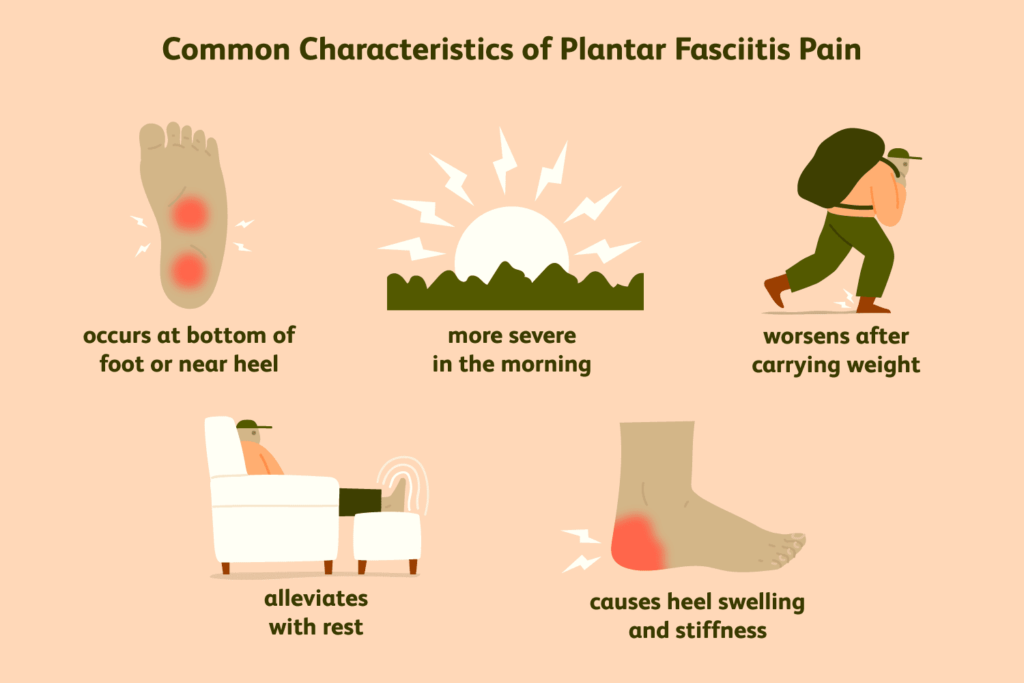
Plantar fasciitis symptoms are typically focused on foot pain and include:
| Sharp Pain in the Heel |
| A sharp, intense pain on the bottom of the heel, most pronounced with the initial steps after waking or after prolonged periods of rest. |
| Pain After Exercise |
| Pain that emerges not during, but after concluding exercise activities. |
| Stiffness and Tenderness |
| The foot’s bottom may feel stiff or tender, particularly in the morning or following periods of inactivity. |
Comprehensive Treatment Options for Plantar Fasciitis
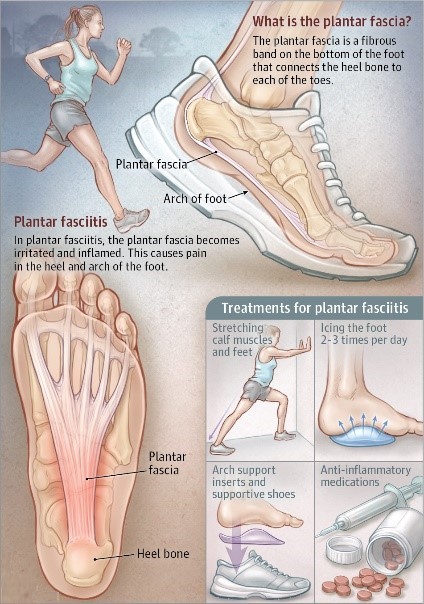
Managing plantar fasciitis involves a combination of lifestyle adjustments, home remedies, and, if necessary, advanced treatments to alleviate pain and improve foot health. Here’s a comprehensive overview of the treatment options available for those suffering from this condition.
Lifestyle Adjustments and Home Remedies
Incorporate Rest Periods
Given the continuous stress the plantar fascia endures, integrating regular rest intervals can facilitate healing by reducing ongoing stress and inflammation. Elevating the feet can also help minimize swelling.
Utilize Ice Therapy
Applying ice can reduce inflammation and numb the pain. A practical approach is to roll a frozen water bottle under the foot, focusing on the arch and heel, to combine ice therapy with a gentle fascia stretch.
Employ Orthotic Inserts
Orthotics are key in redistributing foot pressure, offering arch support, and cushioning the heel, which in turn, minimizes abnormal stretching of the plantar fascia. Both over-the-counter and custom orthotics can prove effective.
Begin the Day with Stretches
To counteract the morning pain typical of plantar fasciitis, start your day with gentle stretching exercises to loosen the plantar fascia and Achilles tendon, preparing them for the day’s activities.
Physical Therapy
A tailored physical therapy program can strengthen and stretch the foot, ankle, and calf muscles, improving foot mechanics and lessening the strain on the plantar fascia.
Weight Management
Reducing body weight can decrease the load on the plantar fascia, alleviating symptoms.
Supportive Shoes
Opt for shoes with good arch support and cushioning to absorb impact and support the foot.
Adapt Exercise Routines
Opt for low-impact activities to stay active without exacerbating plantar fasciitis. For runners, transitioning to softer surfaces and gradually increasing intensity can help.
Medications
NSAIDs like ibuprofen can offer temporary relief from pain and inflammation.
Advanced Treatment Options
1. Corticosteroid Injections: These injections can provide short-term relief for severe cases but are used sparingly due to potential side effects.
2. Extracorporeal Shock Wave Therapy (ESWT): ESWT is considered when other treatments haven’t provided relief, using sound waves to promote healing.
3. Platelet-Rich Plasma (PRP) Injections: PRP therapy uses injections of a concentration of a patient’s own platelets to accelerate the healing of injured tendons, ligaments, muscles, and joints.
Surgical Interventions
Surgery is typically the last resort for plantar fasciitis, considered when pain significantly impacts quality of life and non-surgical treatments have been exhausted.
1. Plantar Fascia Release
Procedure Overview: This surgical intervention aims to alleviate tension and inflammation in the plantar fascia by partially cutting through the ligament. It’s typically performed using endoscopic surgery, a minimally invasive approach that involves small heel incisions and an endoscope for guidance. This technique generally leads to quicker recovery and less post-surgery discomfort than traditional open surgery.
Recovery and Results: Post-surgery recovery time varies, with many individuals able to walk using a protective boot or cast soon after the procedure. Full recovery and a return to regular activities might span from several weeks to months. While the surgery often results in significant pain relief, potential risks include partial relief, the emergence of new foot issues, or nerve damage.
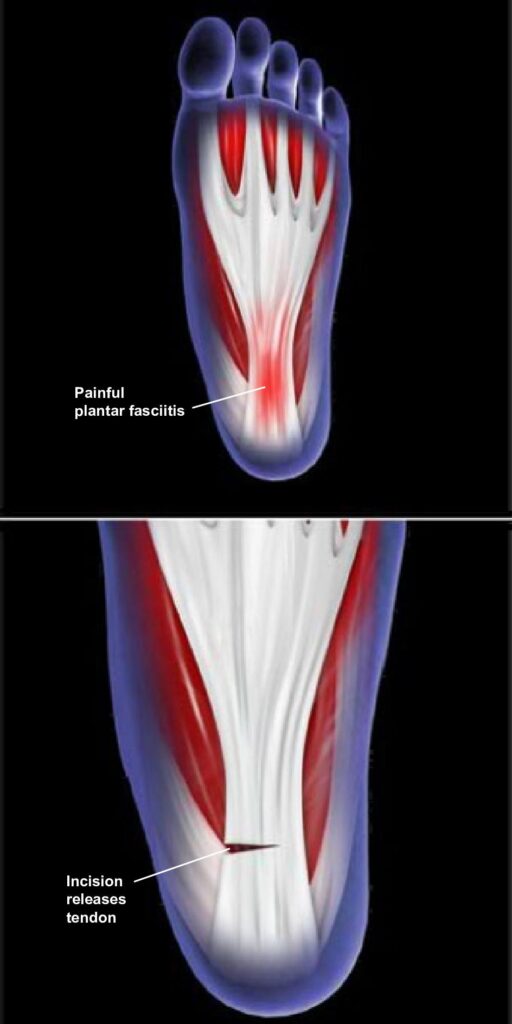
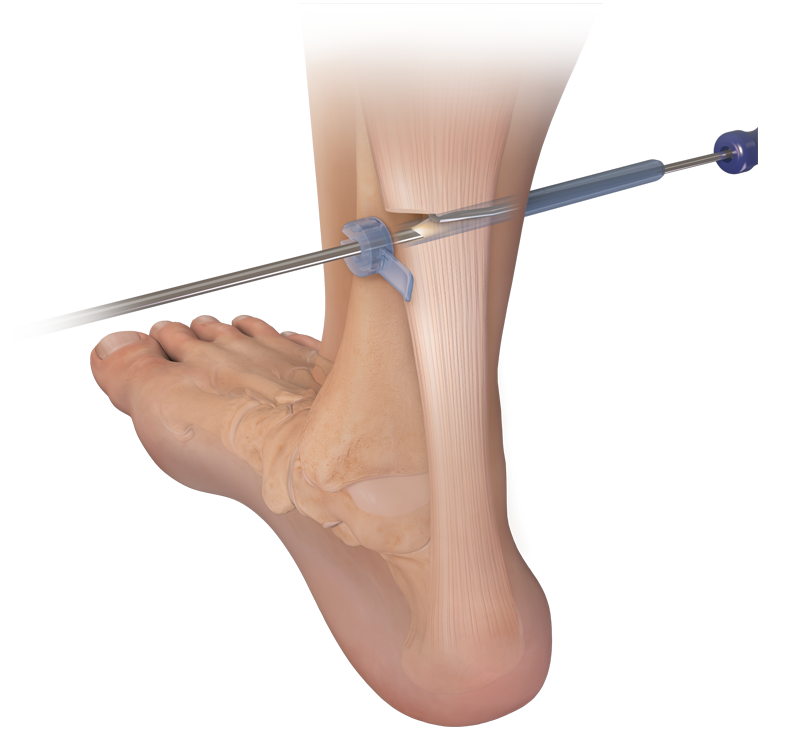
2. Gastrocnemius Recession
Procedure Overview: Targeting the calf muscles, specifically the gastrocnemius muscle, this surgery is designed for individuals with tight calf muscles placing undue stress on the plantar fascia. The operation involves an incision behind the knee or on the calf to lengthen the muscle, thereby easing the strain on the plantar fascia and mitigating pain. It’s considered for patients who struggle with foot flexibility despite extensive stretching.
Recovery and Results: The healing process requires wearing a boot or cast for several weeks to immobilize the foot, followed by physical therapy to restore calf muscle strength and flexibility. Many report significant symptom relief and enhanced foot and ankle flexibility post-surgery, though there are risks of decreased calf strength or surgical complications.
Making the Decision for Surgery
Decision-Making Process: Opting for surgery is a significant decision that necessitates a detailed discussion with a healthcare professional, preferably a foot and ankle surgical specialist. Understanding the expected outcomes, the recovery timeline, and how the surgery aligns with your overall health goals is crucial. Surgery should be approached as a collaborative effort between you and your surgeon, with clear objectives and realistic expectations about the results.
FAQ Section
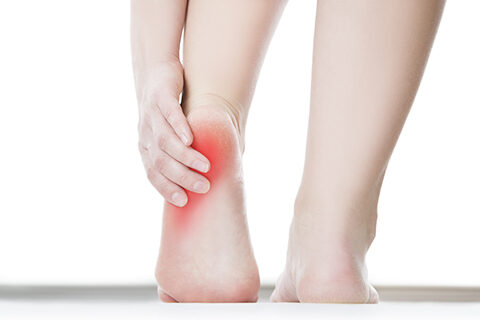
Q: What is Plantar Fasciitis?
A: Plantar fasciitis is the inflammation of the plantar fascia, the tissue that connects your heel bone to your toes, often leading to sharp pain in the heel.
Q: What causes Plantar Fasciitis?
A: It can be caused by excessive foot load, improper foot structure, inadequate footwear, occupational hazards, and weight factors.
Q: What are the symptoms of Plantar Fasciitis?
A: Symptoms include sharp heel pain, pain after exercise, and stiffness or tenderness in the foot’s bottom.
Q: How can I treat Plantar Fasciitis at home?
A: Home remedies include rest, ice therapy, orthotic inserts, stretching exercises, weight management, and wearing supportive shoes.
Q: Are there advanced treatments for Plantar Fasciitis?
A: Yes, advanced options include corticosteroid injections, extracorporeal shock wave therapy (ESWT), and platelet-rich plasma (PRP) injections.
Q: Is surgery an option for Plantar Fasciitis?
A: Surgery is considered the last resort and includes procedures like plantar fascia release and gastrocnemius recession.
Conclusion
Overcoming plantar fasciitis requires understanding its causes, recognizing its symptoms, and applying effective natural remedies. By incorporating lifestyle adjustments, home treatments, and seeking professional advice when necessary, you can achieve significant relief and regain your mobility. Remember, each journey to recovery is unique; start yours today with confidence and the right support.






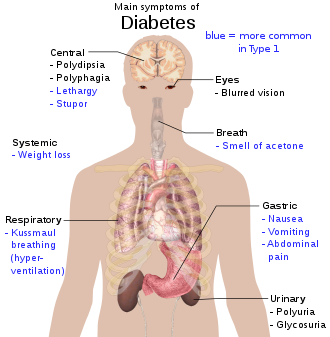




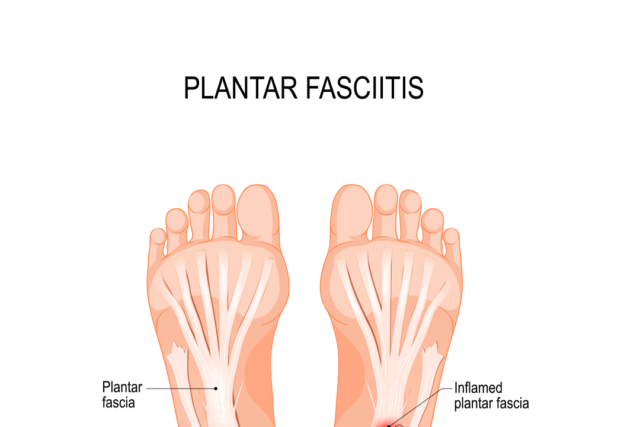
I am genuinely amazed by the profound understanding and superb ability to convey information. The knowledge you share is evident in every piece you write. It’s evident that you invest a great deal of effort into understanding your topics, and that effort pays off. We appreciate your efforts in sharing such valuable insights. Continue the excellent job!